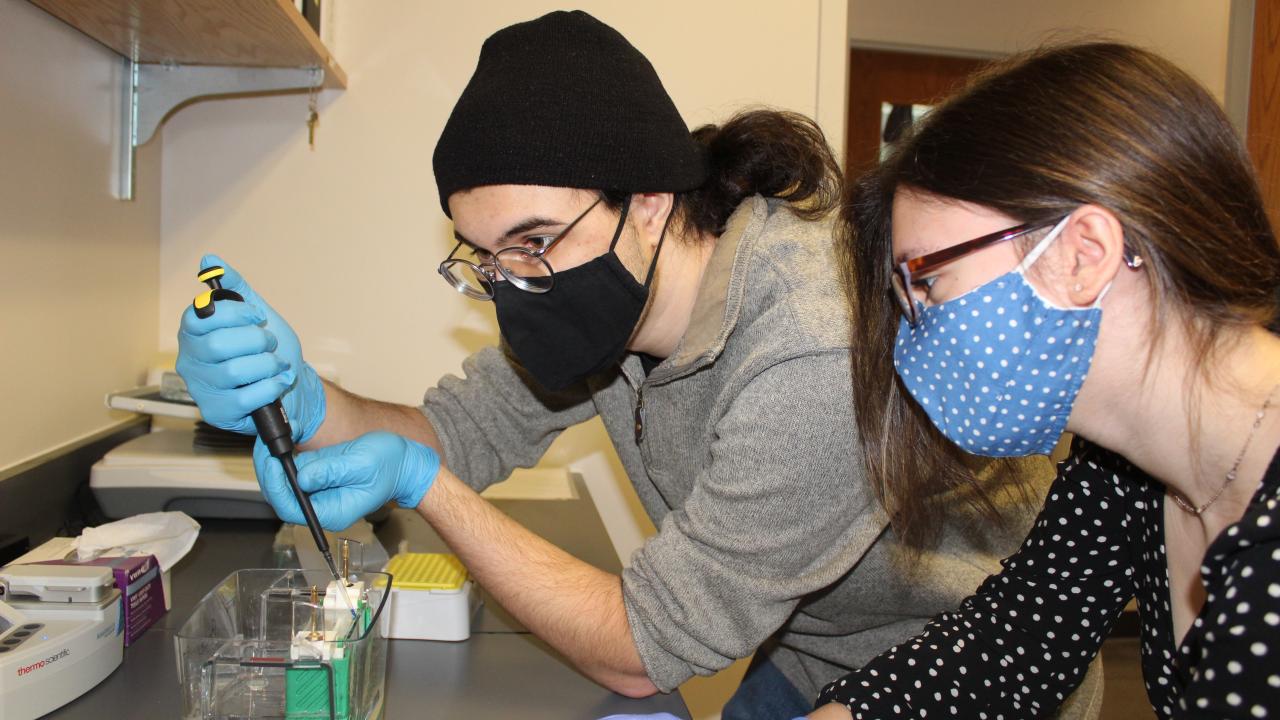A group of Ohio State Marion faculty researchers were recently awarded a $156,000 federal grant from the National Institutes of Health’s National Cancer Institute for research in the role of chromatin remodeling factors in DNA double strand break repair.
Assistant Professor of Molecular Genetics, Dr. Ruben Petreaca, Associate Professor of Chemistry and Biochemistry, Dr. Ryan Yoder, and Assistant Professor of Chemistry and Biochemistry, Dr. Renee Bouley are collaborating toward the goal of identifying molecular mechanisms that drive cancer, which if successful would make significant impact in the field of cancer research. The funds from the grant cover primarily undergraduate research salaries and materials between May 1, 2021 and April 30 2023.
When considering the groups research, Petreaca shared that one challenge to understanding the genetic change in cancer cells is the complexity of the different processes that participate in DNA damage repair.
“Errors in some of these repair processes cause accumulation of various forms of DNA damage that eventually leads to cellular transformation and cancer,” said Petreaca.
“Here we propose novel protein modeling and genetic analysis to understand the interactions between various repair complexes and determine the roles they play in promoting accurate repair,” he added.
As a scientist and researcher, Petreaca boiled it down to two basic concepts, the importance of grant funds to the discovery process and involving students in research.
“It means we can keep doing science,” said Petreaca. “More importantly, this grant will be used exclusively to fund undergraduate research at Marion.”
Yoder echoed Petreaca’s sentiment about the funding directly benefitting undergraduate research and added his thoughts on the unique aspect of collaboration between different departments and majors working toward a unified goal.]
“I think it’s important to stress the interdisciplinary nature of this work,” said Yoder. “We have faculty with three very different backgrounds (molecular genetics, biochemistry, molecular modeling) who are all bringing our own strengths to this effort.”
“That means our students who work on this project will be exposed to many different research methods and techniques,” he added, “which can only benefit them as they move forward in their educational journey.”
Having the resources and backing of a tier 1 research university, while having the advantages of a small campus setting to enhance such a collaborative project is at the core of what Ohio State Marion is all about, Yoder shared.
“The intimate setting of Ohio State Marion, along with (the resources available at) our Science & Engineering Building,” Yoder said, “allows for such interdisciplinary research to thrive and provide our students such opportunities to participate in cancer research.”
According to Bouley, even before she officially began her tenure on campus, she began working on a project with Dr. Petreaca and got advice on purchasing start-up equipment.
“I love how collaborative the science faculty are at Ohio State Marion,” said Bouley.
“It has been so helpful to team up with other faculty in different fields of expertise to tackle challenging problems such as understanding what causes cancer to develop,” she said.
Much like Petreaca and Yoder, for Bouley the grant is about supplying their research materials and hiring bright and energetic young minds who will greatly benefit their future education and career by being involved in research on the undergraduate level.
“This grant is currently supporting several undergraduate students and most importantly for my lab,” Bouley said, “research supplies to be able to conduct biochemistry experiments.”
“The recent Pelotonia fellow Lauren Frank is currently working on purifying proteins and modeling protein-protein interactions as part of this grant,” she explained.
Lauren Frank is the campus’s third Pelotonia Undergraduate Fellowship recipient in the past four years, demonstrating the campus’s strong science programs and the level of faculty engagement with students in interdisciplinary research.
